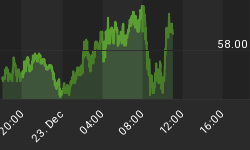Why Read and Watch: Because Free Cash Flow is indeed the best valuation metric for established companies that generate cash flow from operations.
Featured Article and Video: A recent short article with an accompanying video purports to explain what 'free cash flow' is, and why and how it is important as a business valuation metric. On balance, the video does quite a good job of this - and hence is worthwhile watching and listening to.
Commentary: This article and video provides a quick overview to a very important topic that all investors (less so short-term traders) ought to know about and understand. Certainly the discounted after-tax free cash flow valuation methodology is the principal one relied upon by sophisticated companies in their acquisition analysis.
That said, the video presentation suggests that 'free cash flow' is defined as the result obtained for any given fiscal period when all capital expenditures incurred during that period are deducted from recurring operating income generated in that period. That is:
Recurring Operating Income - Total Capital Expenditures
=
Free Cash Flow
That is overly simplistic, and as both a theoretical and practical matter incorrect. This is because:
-
first, the video does not discuss income taxes. It is 'after tax operating income that is important, since corporate income taxes are a cost of doing business and need to be taken into account;
-
second, capital expenditures in any given fiscal period need to be separated between those capital expenditures made to:
-
first, sustain the business at its current operating income level, being that portion of any capital expenditures that are not discretionary - they must be spent (over and above capital maintenance expense) to ensure to the extent possible that the business is able to maintain its existing operating income levels; and,
-
second, promote growth in future operating income. Capital expenditures that fall into this category are of a discretionary nature, much like dividend payouts for example. Growth capital expenditures are expected, when made, to result in increases to current operating income - otherwise such amounts will not be expended.
-
Four final comments:
-
the segregation of both historic and forecasted capital expenditures between those that are of 'a sustaining nature' and those that are of 'a growth nature' typically is a very difficult and subjective task - and one that would be generally beyond the ability of any investor or external analyst who does not have:
-
detailed information developed from discussion with company management, and
-
assistance from experts in plant and equipment technological change and 'wear and tear' (i.e. condition 'as is, where is';
-
-
in both theory and practice where full and detailed data is available, it is "discretionary free cash flow after tax", being properly determined 'free cash flow' after sustaining capital reinvestment and income tax. That is not the same thing as what is referred to in the referenced video as "free cash flow";
-
assuming a portion of annual capital expenditures is made to enhance corporate growth of operations and operating cash flow, to deduct total period capital expenditures from recurring period after-tax operating income is more likely to result in an understatement, not overstatement of business value; and,
-
the video is well worth watching, as subject to the foregoing, it is definitely 'on the right track'.
Video: Everything You Wanted To Know About Free Cash Flow
Source: Investing Answers, Even Perra and Luke Stenis, June 14, 2012. Reading and viewing time: 3 minutes.
















